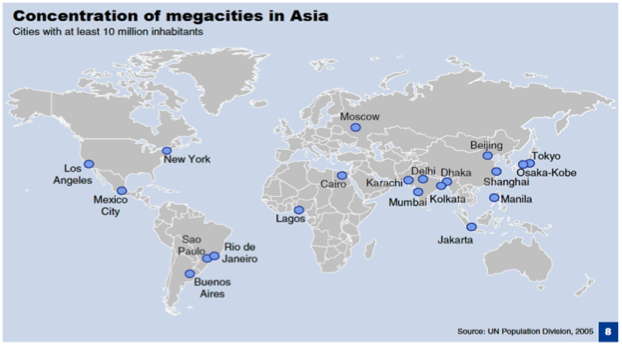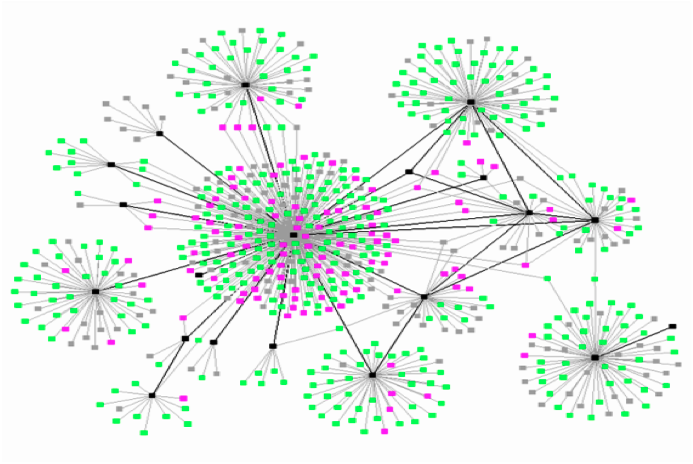Megacities
Distribution
As the world becomes more urbanised, so towns and cities grow in population and area. The term ‘million city’ is used for any city with a population over a million.
In 1950, there were 83 million cities.
In 1997, there were 285 million cities (179 of which were in emerging countries)
By 2015, there were over 500.
World Cities
A few megacities play a larger role in world affairs then other cities.
These are called ‘World Cities’.
These cities have Urban Primacy – That means an importance and influence bigger than there size suggests.
An example of this is London- it is not the world’s largest city but it plays a big role globally. It is strategically placed, close to Europe, and used to rule much of the world through the empire.
Think of each world city as a wheel. The cities are ‘hubs’ (centres, where economic activity occurs. The spokes radiate out with flows of:
Investment – London and New York are the world’s biggest financial centres (Half the worlds money comes through London each year)
Airline traffic – Dubai was the worlds busiest airport in 2014 (London Gatwick and Heathrow combined would be)
Decision-makers (TNC’S) – 80% of the world’s largest companies have headquarters in cities of the USA, the EU, and Japan.
Political decisions – Government decisions in the UK can affect people globally (investment and conflict)
- Describe the distribution of megacities around the world.
- Your answer should include: Asia / Africa / Europe / Concentration
- How has this changed over time?
- Your answer should include: Increased / Grown
- Explain world cities and how they influence decision-making, using the examples of London and New York. Why does Tokyo not have as much influence?
- Your answer should include: Location / Political / Decisions / Investment / EU

